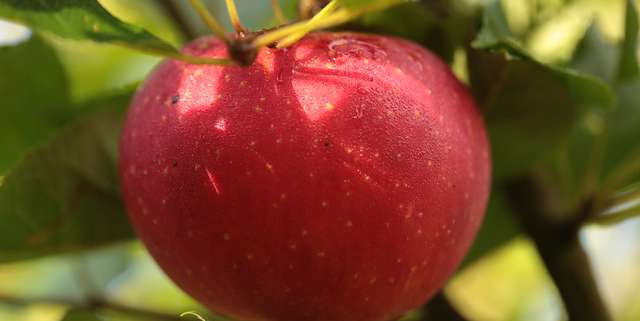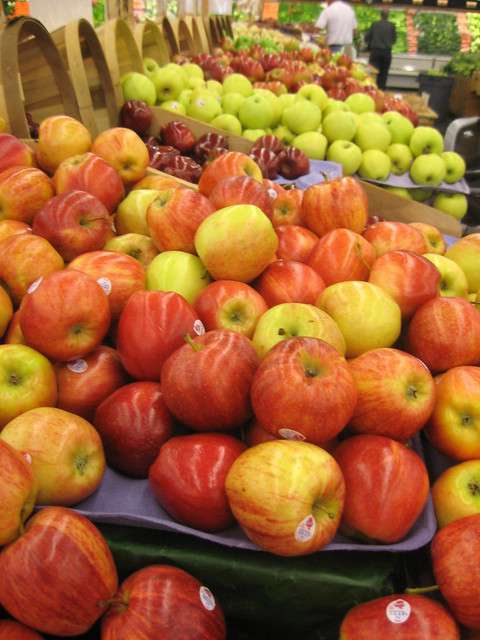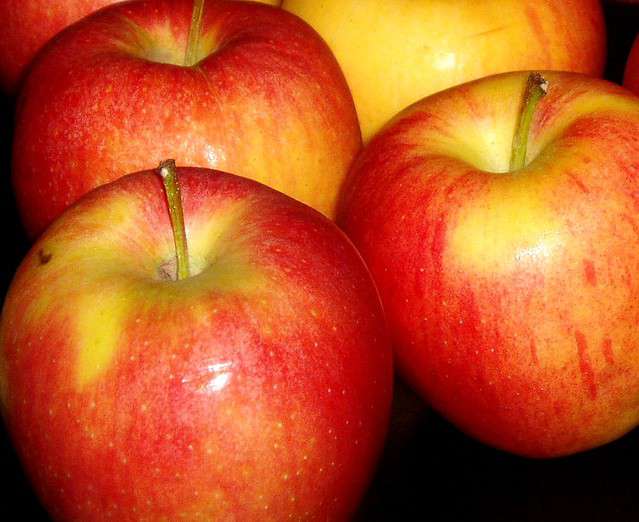
Experienced growers have created a foolproof system of developing maximum color appeal without jeopardizing fruit quality. These systems depend on color measurement instrumentation to ensure favorable results. Image Source: Flickr’ user Henry Hemming
Summer is my favorite time of year because it means spending time outdoors in one of my favorite places…the garden. Despite my love of gardening, I am still just a novice and have much to learn about producing a bountiful harvest. Several years ago I added some apple trees to the corner of my yard and after patiently waiting for them to mature, I can now reap the benefits. Unfortunately my crop has yet to compare with the store bought version that is bright in color, yet crisp and juicy. In order to achieve that nice red hue, I must leave my apples on the tree till they nearly drop. Unfortunately that results in fruit is soft and gritty. If I pick them early I can enjoy the fresh juicy flavor, but my eyes just can’t get past that unappealing dull yellowish tone.
Commercial apple growers know that color plays and important role in consumer appeal and strive for that bright red color to entice the buyer. But how do they reach the maximum hue of red without compromising fruit quality? Well many agricultural scientists have spent countless hours perfecting this trick. From experimenting with nitrogen sprays and supplements to new procedures that utilize reflective plastics, the results can vary significantly. That is why many experienced growers utilize color measurement in agriculture and understand how instrumental analysis can improve fruit color and ripeness.
Using Color Analysis to Compare Production Methods
Red is the most preferred color of apple among consumers and outer peel appearance is the main trait used to influence purchases1. Apple peel color varies based on growing conditions and geographical locations and therefore must be closely monitored when comparing various production methods. The most predominant factor that contributes to red pigmentation is both light and temperature, which greatly affect the saturation of color in apple skin. The concentration of red peel color relates directly to anthocyanin production, which depends solely on light intensity and quality. Temperature also affects anthocyanin production and fluctuates, with high temperature reducing concentration and low temperatures increasing these levels2.

Many factors can influence color development and fruit quality. Spectrophotometers provide a systematic approach to improving fruit quality and color. Image Source: Flickr’ user moonjazz
There are several methods used to increase anthocyanin production and improve red color development in red-fruited cultivars. These methods include bagging, plastic film light reflection, fruit thinning, and extensive pruning for improved light penetration. Growers choose each method based on color maturation results to ensure premium crop quality. These results can be monitored using color measurement technology. Spectrophotometers are a common tool used in agricultural sciences due to their durability and ease of use. Processes can be assessed and data can be documented easily as growing conditions are modified and changed. This data can then be used to determine the best methods for optimal color development.



